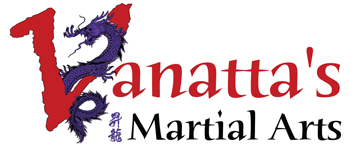Introduction to Wado-Ryu Karate
Karate is the art of the “empty hand.” It was developed over many centuries from fighting systems of Chinese origin that grew out of Buddhism. Karate, as we know it today, is ultimately an Okinawan art—Okinawa being one of the Ryukyu Islands south of Japan and east of China.
The Okinawans developed “Te” (pronounced “tay”) in response to alternating occupation by China and Japan. While occupied, the Okinawans were prohibited from possessing weapons. As a result, they secretly developed Te (a.k.a. Okinawan-Te) as a means of defending themselves against bandits and soldiers. Te was developed on the basis of Kempo, an art of Chinese origin. Te was more or less adopted and modified by the Japanese and became “Kara-Te.” Today, karate is recognized as a Japanese martial art. However, its ultimate origins from Okinawa cannot and should not be ignored.
Karate in the Japanese sense is a linear art, as opposed to Chinese systems which tend to circular movements. It uses a series of basic kicks, strikes, and blocks with a strong emphasis on kata practice. Kata tend to be hinged on the same basic framework across the varying karate styles, but they may have certain unique intricacies that vary from style to style and represent the particular “ryu” (ryu – style/system) being practiced. Karate is also noted for having approximately equal emphasis on kicking and striking techniques. This is opposed to Chinese systems (i.e. Kung Fu) that tend to favor hand/upper limb methods and Korean systems (i.e. TaeKwonDo) which strongly favor kicks.
There are 3 major components to karate practice in general:
1. Kihon = “basics”
2. Kata
3. Kumite – “sparring”
Wado-Ryu, one of the four major karate systems, is Japanese in every sense of the word, and is credited with being the first true Japanese system. It is a linear art that includes the kicks, strikes, and blocks typical to all karate styles and uses the kata system inherent in the Okinawan-based Japanese karate systems. However, Wado-Ryu was founded by an accomplished Ju-Jitsu (Shinto Yoshin Ryu) master who later began the study of karate. As a result, Wado-Ryu has acquired certain unique characteristics due to its ju-jitsu influence that may be summarized as follows:
1. shorter and higher stances for greater mobility
2. emphasis on natural body movements, particularly evasion and re-directing
an opponents energy (as opposed to resisting/intercepting)
3. less extended punches/attacks, usually coupled with a “snapping” action
4. integration of ju-jitsu techniques.
Wado-Ryu was the first system to use kumite (sparring) as a standard form of karate practice and its founder is credited with laying the basis for contemporary competitive-based tournaments.
Wado-Ryu is the “school of the way of harmony” or “way of peace.” The classical concept of non-resistance is reflected in its natural approach to combative techniques. More importantly, this ideal is seen through its emphasis to use its practice as a means of character and personal development. It is the perfect example of budo, the martial way, where the ideal warrior is also a person of outstanding character and is capable of contributing to the advancement of good within one’s society.
Interestingly, the term “wado” has a double translation. Japanese terms that begin with “wa” also carry the implication of things “Japanese.” Thus, Wado can also be read as the “Japanese Way.” Although coincidental, this reminds us that Wado-Ryu is the first true Japanese karate style.
